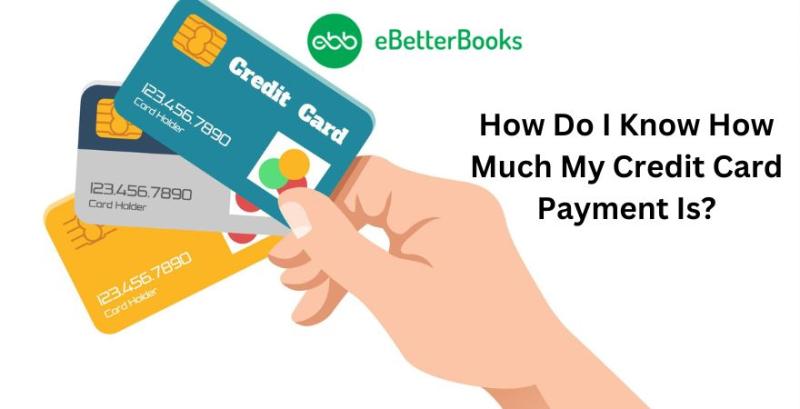How Do I Know How Much My Credit Card Payment Is?

Knowing how much your credit card payment is each month is essential for managing your finances and avoiding late fees. Credit card payments can vary depending on how much you spend, your interest rates, and any fees you've incurred.
Here’s how to determine your monthly payment:
1. Check Your Billing Statement
Your credit card issuer sends a billing statement each month (either by mail or electronically), detailing your total balance, minimum payment due, and payment due date. The total balance is what you owe if you want to pay off the card entirely, while the minimum payment is the least you must pay to keep your account in good standing.
2. Understand the Minimum Payment Calculation
The minimum payment is usually calculated as a small percentage of your total balance, often around 1% to 3%, plus any interest and fees. If your balance is low, the minimum payment may be a flat fee, typically between $20 and $35. Paying only the minimum each month can result in paying more in interest over time, so it's better to pay more when possible.
3. Review Your Online Account
Most credit card issuers provide online portals or mobile apps where you can quickly check your current balance and the minimum payment due. This is a convenient way to stay updated and manage your payments from anywhere.
4. Set Up Payment Alerts
To ensure you never miss a payment, you can set up alerts through your bank or credit card app. These alerts can notify you when your payment is due, the amount owed, or even remind you to pay more than the minimum.
5. Automatic Payments
If you're worried about forgetting your payment, consider setting up automatic payments for at least the minimum amount. This way, you'll avoid late fees and damage to your credit score, while you can still make additional payments to reduce your balance faster.
The Last Summary!
Understanding your credit card payment involves reviewing your billing statement, knowing how minimum payments are calculated, and monitoring your online account. Setting up payment alerts or automatic payments can help you stay on track. Paying more than the minimum helps reduce debt faster and lowers interest costs.
Frequently Asked Questions
How is my minimum payment determined?
Your minimum payment is usually calculated based on a percentage of your total balance (around 1% to 3%) plus any interest and fees. For smaller balances, it may be a flat amount like $20.
What happens if I only pay the minimum?
Paying only the minimum will keep your account current, but it will lead to interest charges and can take longer to pay off your balance. Over time, this increases the total cost of your credit card debt.
Can I change my credit card payment due date?
Yes, most credit card companies allow you to change your payment due date to one that better aligns with your payday or financial schedule. Contact your card issuer or check your account settings to make the adjustment.
What should I do if I can’t afford my credit card payment?
If you’re struggling to make a payment, contact your credit card issuer as soon as possible. Some companies may offer hardship programs, temporary payment plans, or waive fees to help you through financial difficulties.
Can I pay more than the minimum payment?
Yes, and it’s a good idea! Paying more than the minimum reduces your overall balance faster, lowers interest charges, and helps you pay off the card sooner, saving you money in the long run.
Post Your Ad Here
Comments